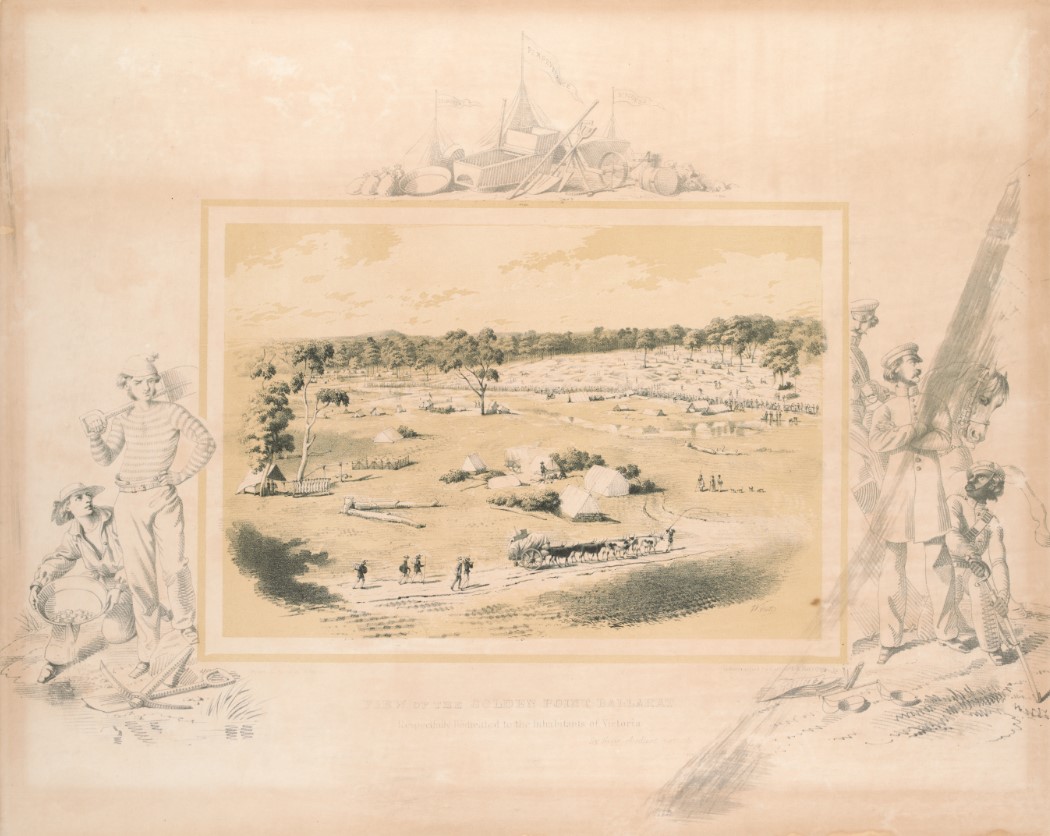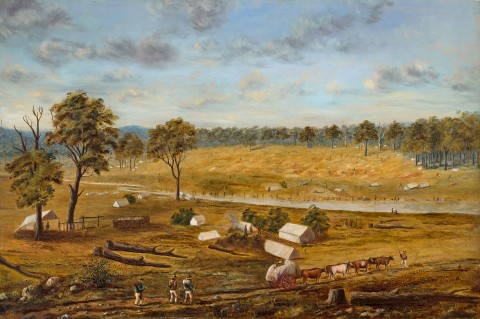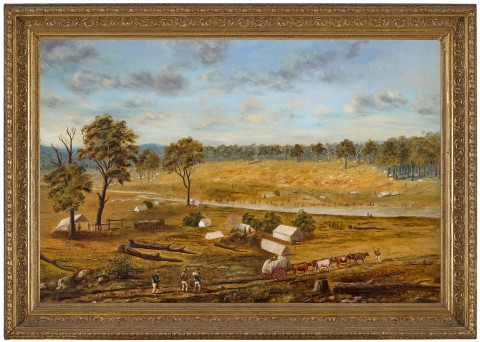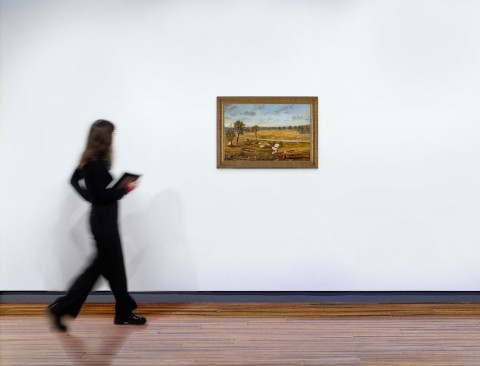GOLDEN POINT, BALLARAT. 1852, before 1887
EMMA SCAMMELL
oil on canvas
71.0 x 76.0 cm
signed lower right: Emma Scammell
inscribed with title lower left: Golden Point / Ballarat / 1852
William Little, Ballarat
Leonard Joel, Melbourne, 1 August 1984, lot 1120 (artist name as 'Emma Gemmell')
Private collection, Sydney
Deutscher Fine Art, Melbourne
Private collection, Melbourne
Australian Painting: Colonial/Impressionist/Early Modern, Deutscher Fine Art, Melbourne, 30 October – 16 November 1984, cat. 14 (illus. in exhibition catalogue)
A Century of Australian Women Artists, 1840s – 1940s, Deutscher Fine Art, Melbourne, 3 June – 3 July 1993, cat. 20
Little, W., Ballaarat: A Retrospect by Lambda. Printed for private circulation by William Little, 1907 (illus. frontispiece)
Hammond, V., A Century of Australian Women Artists 1840s – 1940s, Deutscher Fine Art, Melbourne, 1993, cat. 20, p. 50 (illus.)
William Strutt, Golden Point, Ballarat, 1852, pen and ink and watercolour, illus. in Strutt, W., Victoria the Golden: Scenes, Sketches, and Jottings from Nature, 1850–1862, compiled c. 1895, Victorian Parliamentary Library, Melbourne, pl. 90
William Strutt, View of the Golden Point, Ballarat, 1852, lithograph, 40.6 x 50.2 cm, published by Campbell and Macartney, Melbourne, February 1852
Unknown engraver after William Strutt, The Golden Point, Ballarat, wood engraving, illus. in ‘Gold in Australia’, The Illustrated London News, 3 July 1852, vol. 21, issue 567, p. 9
William Strutt.jpg

‘The axe of the digger quickly made inroads upon the forest all round; the green banks of the Yarrowee were lined with tubs and cradles, its clear waters were changed to liquid, yellow as the yellowest Tiber flood, and its banks grew to be long shoals of tailings’.1
This scene, looking across ‘Golden Point’, Ballarat, where gold had been discovered in August 1851, originated from the skilful pencil of William Strutt, the English-born and French-trained artist who travelled to the goldfields only six months later. There he recorded the social turmoil and environmental damage caused by the influx of hordes arriving every day to try their luck. This painting, however, was not created in 1852 – and indeed, the artist, Emma Scammell, was not born until 1856. Instead Scammell based her painting on the lithograph Strutt swiftly produced in Melbourne – decorated with depictions of miners, native police and mining equipment – or a wood-engraved version published shortly afterwards in the Illustrated London News, in July 1852, or a later iteration.2
Such historic subject matter was common in the 1870s and 1880s when older artists (including Strutt back in England) returned to earlier sketches, and a younger generation investigated their local history, as the fiftieth anniversary of the colonisation of Victoria approached. Scammell is recorded as having trained at the Ballarat School of Mines and being awarded medals and commendations in Melbourne exhibitions of ‘juvenile’ (student) art in 1879 and 1880. This substantial oil painting was produced prior to her marriage in 1887, the year that she and her husband Edgar Foreman settled in Brisbane. There she became a founding member of the Queensland Royal Society of Art, exhibiting over subsequent decades, and died in 1947, her obituary noting her as ‘well known in art circles in Brisbane’.3
1. W.B. Withers, History of Ballarat and Some Ballarat Reminiscences, 1870 (facsimile: Ballarat Heritage Services, 1999), p. 23
2. See related works, listed above
3. ‘Death of artist’, The Telegraph, Brisbane, 5 Feb. 1947, p. 5
ALISA BUNBURY


